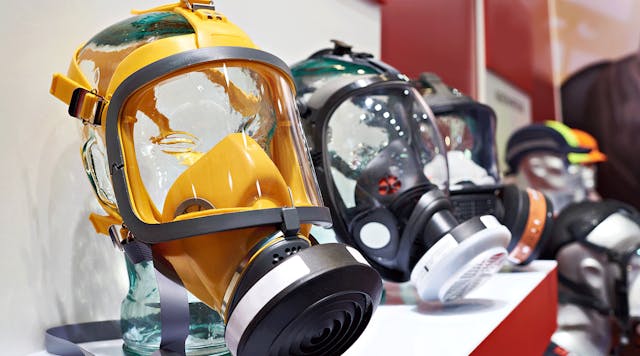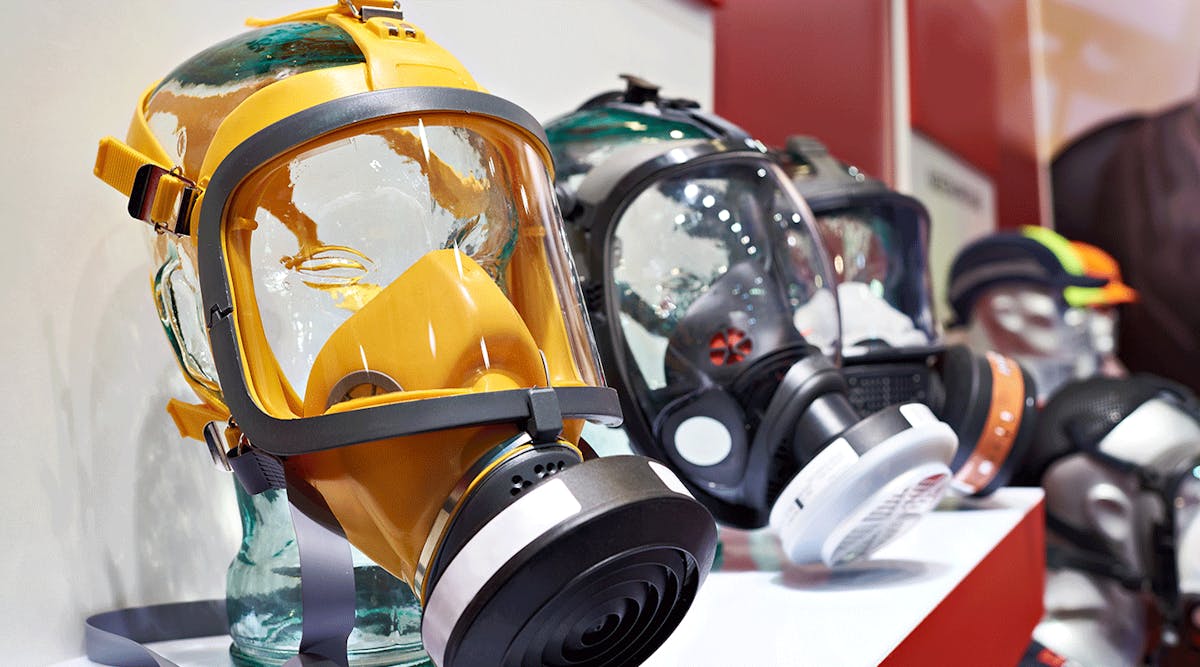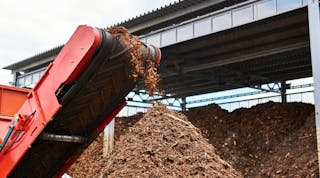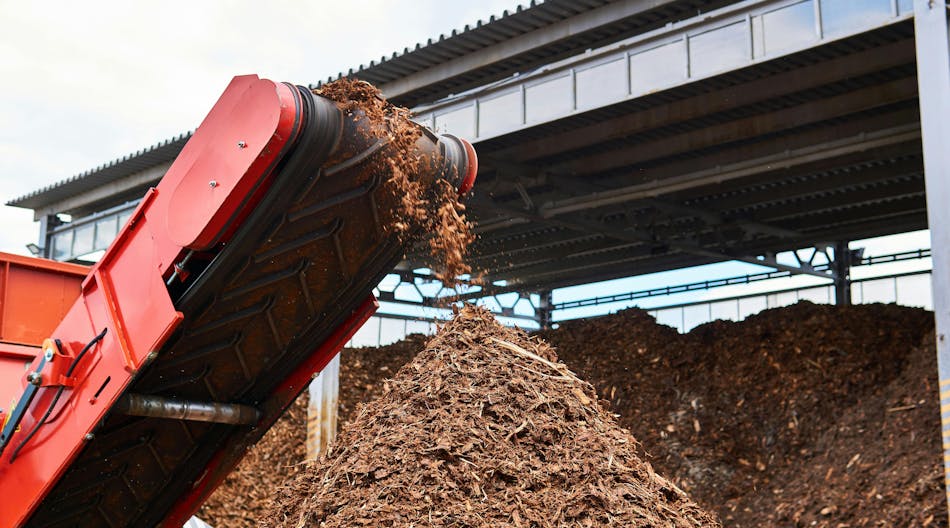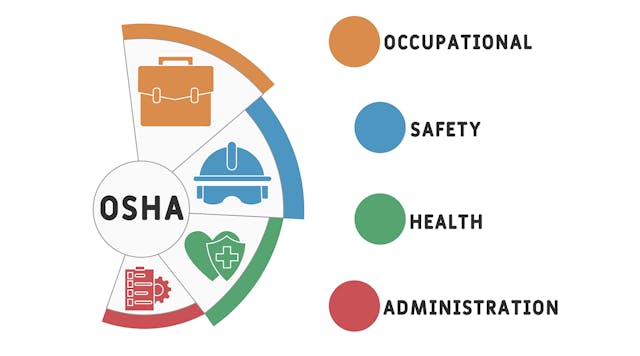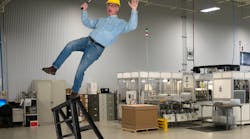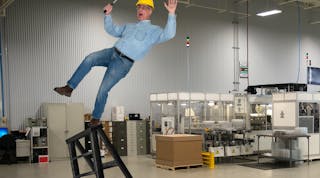With so many respirators in use and readily available for purchase through both online merchandisers and at neighborhood hardware stores, it’s important to remember that when it comes to choosing respiratory protection, there’s not a one-size-fits-all solution.
An estimated 5 million workers are required to wear respirators in 1.3 million workplaces throughout the United States, according to OSHA¹. Knowing what the agency requires for respirator use in the workplace, as well as having a thorough understanding of both the application and contaminants present are critical to the respiratory protection selection process.
In addition, having an understanding of the information that’s needed and its importance will ensure the safety of the respirator user while expediting the selection experience. Knowing where to turn for help can make the selection process less daunting for safety professionals faced with respiratory protection options.
Understand the Hierarchy
Before an EHS professional starts down the path of purchasing respirators, an understanding of OSHA’s hierarchy of hazard control measures is in order. From the agency’s perspective, personal protective equipment (PPE) is the last option for an employer seeking to prevent employee exposure to a contaminant. OSHA’s hierarchy of control measures, in order, is:
• Elimination/substitution
• Engineering controls
• Administrative and work practice controls
• PPE
When it comes to respiratory hazards, elimination/substitution means phasing out the contaminant or substituting a non-hazardous material for the contaminant causing the concern. Examples of engineering controls include the isolation or dilution of the contaminant through the use of a fume hood or ventilation.
Administrative and work practice controls could encompass rotating multiple workers through a job where contaminates are present to reduce individual exposure levels.
A respirator only becomes an option if the preceding control methods are infeasible or if they fail to reduce exposures to acceptable levels. Respirators also could be used in the interim while the other control measures are being implemented.
After a safety manager has done his/her due diligence in working through the hierarchy of controls, and it’s determined that respiratory protection is going to be part of their exposure control plan, the employer will need to implement a respiratory protection program as defined by OSHA in 29 CFR 1910.134(A).The respiratory protection program is a written collection of work-site specific procedures and policies that cover all the requirements of OSHA’s respiratory protection standard. It’s essentially a blueprint for ensuring the health and safety of all employees using respiratory protection.
One requirement of the respiratory protection program is that the employer designates an administrator to run the program and evaluate its effectiveness. “An individual is qualified to be a program administrator if he or she has appropriate training or experience in accord with the program’s level of complexity,” According to OSHA’s Small Entity Compliance Guide for the Respiratory Protection Standard².
The employer must determine, based upon the hazards present and the type of respiratory protection equipment being used, the knowledge and potential training requirements for their program’s administrator.
In addition to requiring a written document and having an assigned administrator, a respiratory protection program must be specific to the workplace and include procedures on the following:
• Selecting respirators
• Medical evaluations of employees required to wear respirators
• Fit testing
• Routine and emergency respirator use
• Schedules for cleaning, disinfecting, storing, inspecting, repairing, discarding and maintaining respirators
• Ensuring adequate air quality for supplied-air respirators
• Training in respiratory hazards
• Training in proper use and maintenance of respirators
• Program evaluation
• Ensuring that employees who voluntarily wear respirators (excluding filtering facepieces, which OSHA defines as a negative pressure, particulate respirator with a filter as an integral part of the facepiece or with the entire facepiece composed of the filtering medium. Sometimes referred to as a dust mask. Comply with the medical evaluation and cleaning, storing and maintenance requirements of the standard
• Updating the written program as necessary to account for changes in the workplace affecting respirator use
• Providing equipment, training and medical evaluations at no cost to employees
Application and Contaminants
Along with a foundational knowledge of what OSHA requires for respirator use in the workplace, employers and safety professionals must add an understanding of both the application being performed and the contaminant(s) present to the pre-selection equation. Consideration of the application or task where the respirator protection is needed is important because certain applications will limit the respiratory protection options available.
Respirators work in one of two ways. The first and most commonly used form of respirator uses activated carbon and or mechanical filters to remove the contaminant(s) present from the worker’s breathing air. This style of respirator commonly is referred to as an air-purifying respirator (APR). The second style protects by supplying clean, respirable air to the worker from another source. This category of respirators is known as supplied air respirators (SARs).
For respirator applications in which the worker could be exposed to unknown contaminants or unknown concentrations of contaminants, APRs are not an option. APRs also are not an option in applications where the worker could encounter oxygen deficient. OSHA defines this as oxygen levels of less than 19.5 percent³. For these, employers must use either a self-contained breathing apparatus (SCBA) or a pressure-demand SAR with an emergency egress (escape) supply of auxiliary breathing air.
Also, certain applications like abrasive blasting negate the use of APRs. For abrasive blasting, OSHA requires the use of a SAR. Specifically, a SAR that’s appropriate for entry into and escape from atmospheres not immediately dangerous to life or health (IDLH) with appropriate protection for the wearer’s head and neck.4
When APRs are an option, a thorough understanding of the application equally is as important. If a task requiring particulate protection includes exposure to oil aerosols, then an oil-resistant (R-series) or oil-proof (P-series) mechanical filtering element will be needed, rather than a non-oil-resistant (N-series) filter.
For contaminants that allow the use of APRs, employers must know the airborne concentration of the contaminant to which the worker will be exposed in order to validate whether an APR will offer a sufficient level of protection. APRs have established maximum use limitations. If an APR is an option, when qualitatively fit tested, it can only be used up to 10 times OSHA’s permissible exposure limit (PEL) but is never to exceed the established IDLH concentration for the contaminant.
Just as there are applications that’ll prevent the use of APRs, there are specific contaminants that do the same. Contaminants such as ethylene oxide and methylene chloride, in concentrations above OSHA’s established exposure limits, require SARs for OSHA compliance. Other contaminants like methyl alcohol and carbon monoxide require SARs when exposure limits are exceeded due to the ineffectiveness of APR filter media.
The only way to determine the airborne levels of a contaminant is to conduct exposure monitoring. For vapors and gases, this can be done in most instances using passive dosimeter badges that are worn for a work shift and then sent to a laboratory for analysis. Measuring for particulate contaminates is a bit more complicated. Employers will need to attach properly-calibrated, continuous-flow sampling pumps with appropriate filter media to workers in the area of exposure. Again, this filter media is sent off to a laboratory for analysis.
Resources for Guidance
Selecting respiratory protection can be complicated and requires homework on the part of the employer and safety professional. The selection process especially can be challenging for smaller employers who don’t have a dedicated safety person on staff. Fortunately, there are good resources available when help is needed. OSHA’s web site offers a respiratory protection eTool to guide employers through the selection process. To use the tool, the employer needs to come armed with the information discussed above. They plug the required information into the fields of the eTool, and then respiratory protection options are outputted.
Other useful resources for selection guidance are respirator manufacturers and safety equipment suppliers who offer product support. The advantage of these resources is the employer will have access to a knowledgeable partner to help navigate through the selection process. Someone who understands the requirements of the respiratory protection standard and knows the questions to ask to ensure the final respiratory protection solution is appropriate for both the application and the contaminants present. EHS
Mike Stearns is a technical safety specialist at Grainger. He offers technical support and training to help customers comply with workplace safety regulations and safeguard facilities. For more information on creating a safer working environment, visit http://safety.grainger.com.
1OSHA’s Respiratory protection page, https://www.osha.gov/SLTC/respiratoryprotection/index.html
2Small Entity Compliance Guide for the Respiratory Protection Standard https://www.osha.gov/Publications/3384small-entity-for-respiratory-protection-standard-rev.pdf
3Code of Federal Regulations Title 29 Part 1910.134(b)
4OSHA FactSheet - Protecting Workers from the Hazards of Abrasive Blasting Materials


